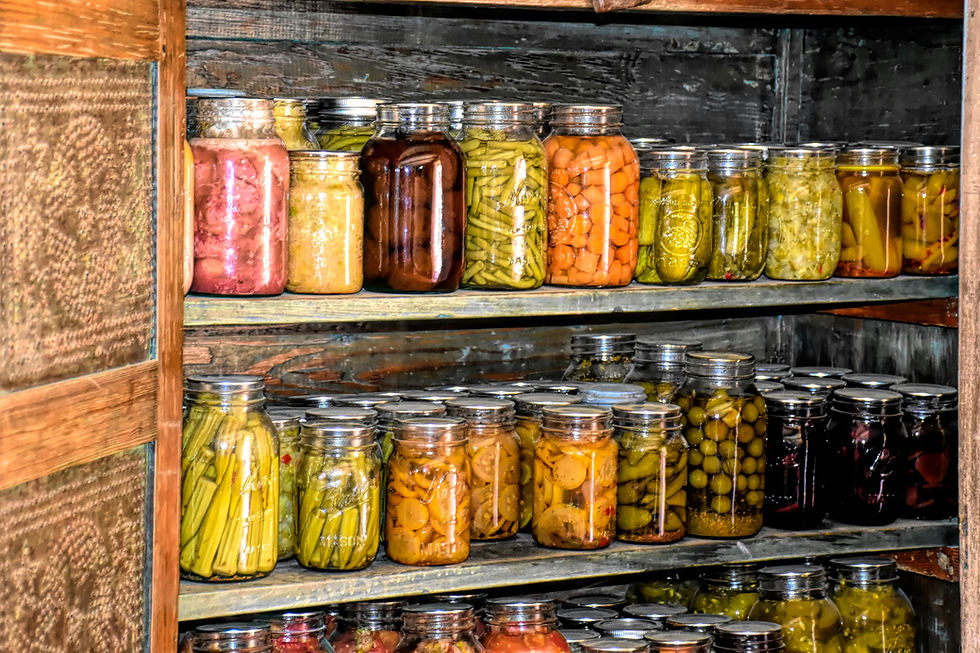Farmers, Not Just Food: Why Supporting Sustainable Agriculture Starts with Awareness
- Sustainable Agriculture Network

- Sep 21
- 4 min read
Walk into any grocery store and you’ll see food—bright labels, tidy rows, endless choice. What you don’t see: the farmers coaxing life from tired soils, the field teams adapting to drought and floods, the communities rebuilding biodiversity so harvests can continue. Sustainable agriculture is as much about people as it is about produce. And the first step to supporting it isn’t your wallet—it’s your awareness.
Awareness changes the question
Most of us shop on autopilot: price, convenience, habit. Awareness nudges a different question to the top: “Who and what am I nourishing with this choice?” That question connects your plate to soil health, water quality, pollinators, farmworker well-being, and rural livelihoods. It turns “food” back into a living system.

Farmers first: the human engine of sustainable food systems
Practices like agroforestry, cover cropping, and integrated pest management don’t happen in a vacuum—they’re learned, adapted, and carried forward by farmers. When farmers have access to reliable information, peer networks, and fair market signals, they can:
Build soils that hold water during droughts and drain better during storms.
Diversify crops to spread risk and improve nutrition locally.
Protect native habitat and wildlife corridors on and around farms.
Earn more stable incomes over time through quality, traceability, and resilience.
Supporting sustainable agriculture, then, starts with seeing and valuing the people who make it possible.
What “awareness” looks like in everyday life
You don’t need to overhaul everything. Start with small, repeatable habits that respect farmers and landscapes.
At home
Buy by season and region when you can. Seasonal food often aligns with lower inputs and better flavor.
Read beyond the label. Certifications and origin info can be helpful; so can QR codes, brand stories, and retailer sourcing pages that show how growers are treated and how land is managed.
Plan meals to reduce waste. The most sustainable crop is the one you don’t throw away—freeze extras, love your leftovers, and get creative with stems and peels.
Try a CSA or farm stand. Community Supported Agriculture and direct purchases make the farmer–eater relationship visible. Even occasional visits can reshape how you shop.
In your community
Ask your grocer or market vendor questions. “Who grew this?” “How is it produced?” “What’s coming into season next month?” Retailers notice and adjust when curiosity becomes common.
Choose restaurants that name their farms. Menus that credit growers signal stronger, often more sustainable partnerships.
Support school and community gardens. They’re living classrooms for soil health, pollinators, composting, and the joy of growing food.
In your workplace or organization
Rethink procurement. Office kitchens, events, and cafeterias can prioritize seasonal menus, fair labor, and reduced waste—tiny shifts that add up.
Host a lunchtime learning session. Invite a local farmer, agronomist, or food systems practitioner to share how climate and markets shape what we eat.
In your media diet
Follow farmer voices. Field diaries, podcasts, and photo essays ground headlines in lived experience.
Balance stories with science. Enjoy the narrative, then dig into the agronomy behind it—soil organic matter, water-use efficiency, biodiversity indicators.

Policy is part of your pantry
Rules about land, water, trade, and labor shape farming more than most of us realize. You don’t need to be a policy expert to make a difference:
Stay informed on local zoning and water decisions. These affect whether farms can thrive near your city.
Speak up for climate-smart agriculture and farmworker protections. Fairness and resilience go hand in hand.
Vote with clarity. When you evaluate proposals, ask: Will this help farmers adopt practices that restore soil and biodiversity? Will it keep rural communities viable?
Travel and learn—responsibly
If you’re lucky enough to visit farms on vacation or through educational tours, approach with humility: listen first, ask better questions, and honor privacy. Seek experiences that invest in local knowledge and conservation, not just picturesque views.
Busting a few myths
“Sustainable = expensive.” Sometimes, yes. Often, no. Seasonal produce, pulses, bulk grains, and reduced waste can lower costs while raising quality.
“It’s all or nothing.” Perfection isn’t the goal; patterns are. Five consistent habits beat one grand gesture.
“It’s only about the farm.” Processing, transport, retail, and kitchens matter too. Awareness illuminates the whole chain.

A simple framework for smarter choices
Think in three layers—People, Planet, Proof:
People: Who grew or harvested this? Were their livelihoods and safety respected?
Planet: What practices support soil, water, climate, and biodiversity?
Proof: How do I know? Look for transparent sourcing, third-party validation, or credible storytelling that shows the how, not just the what.
Questions worth asking (and re-asking)
“What does ‘regenerative’ mean here—what practices are in place?”
“How are farmers adapting to heat, pests, or water stress this season?”
“What’s being done about soil organic matter and pollinator habitat?”
“How is waste handled from farm to store to my kitchen?”
“Whose voices are missing from this story?”
Quick-start checklist
Pick one product category (coffee, cocoa, bananas, greens) and learn how it’s typically grown.
Choose two habits to keep all year (e.g., seasonal shopping + meal planning).
Follow three farmer or agronomy accounts for field-level insight.
Ask one sourcing question each week at a store, market, or restaurant.
Share one practical tip with a friend—awareness spreads person to person.
The future you can feel in the soil
Picture a hillside ten years from now: native trees stitched along contours, soils spongy with life, streams running clearer, birds returning at dawn. That future is built one choice, one growing season, one conversation at a time—anchored in awareness. When we pay attention to farmers, not just food, we make room for agriculture that heals ecosystems, nourishes communities, and steadies our climate.
Start with curiosity. Let it guide your plate, your questions, and your voice. The rest grows from there.




Comments